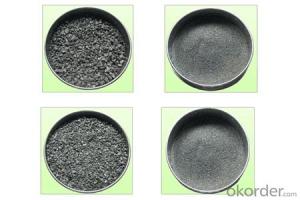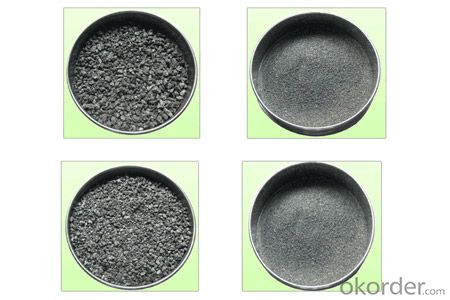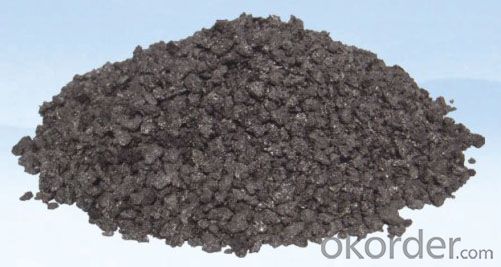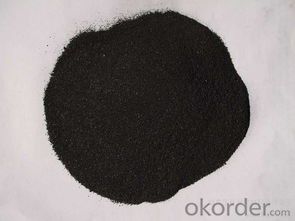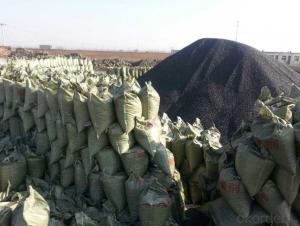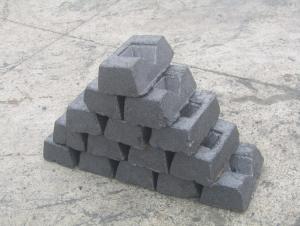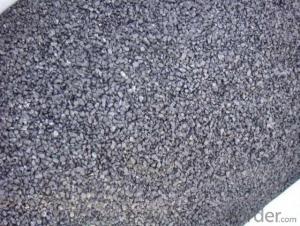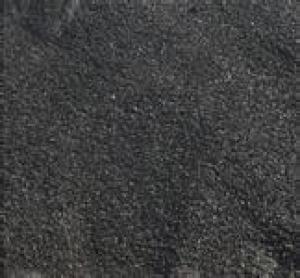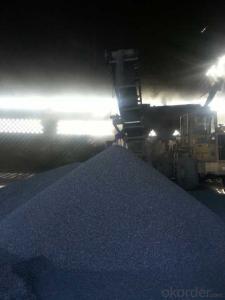FC93 Carbon Additive/CNBM Low Price Good Quality
- Loading Port:
- Tianjin
- Payment Terms:
- TT OR LC
- Min Order Qty:
- 0 m.t.
- Supply Capability:
- 100000 m.t./month
OKorder Service Pledge
OKorder Financial Service
You Might Also Like
Packaging & Delivery
| Packaging Detail: | 25kgs/50kgs/1ton per bag or as buyer's request |
| Delivery Detail: | Within 20 days after receiving corect L/C |
Specifications
Calcined Anthracite
Fixed carbon: 90%-95%
S: 0.5% max
Size: 0-3. 3-5.3-15 or as request
Our Products:
•Feature: All of our goods are made in the best quality of world famous Tianjin. All of our products are with High carbon, Low ash, low sulphur, Low Moisture.
•Application:
The Calcined Anthracite Coal/Gas Calcined Anthracite Coal/Carbon Raiser is mainly used in steelmaking in electrical stove, screening water, shipbuilding sandblast to remove rust. It can reduce the cost of steelmaking effectively by replacing the traditional petroleum coke of carburant.Also can improve the Carbon content in steel-melting and Ductile iron foundry.
General Specification of Calcined Anthracite:
PARAMETER UNIT GUARANTEE VALUE | |||||
F.C.% | 95MIN | 94MIN | 93MIN | 92MIN | 90MIN |
ASH % | 4MAX | 5MAX | 6MAX | 7MAX | 8MAX |
V.M.% | 1 MAX | 1MAX | 1.5MAX | 1.5MAX | 1.5MAX |
SULFUR % | 0.5MAX | 0.5MAX | 0.5MAX | 0.5MAX | 0.5MAX |
MOISTURE % | 0.5MAX | 0.5MAX | 0.5MAX | 0.5MAX | 0.5MAX |
Size can be adjusted based on buyer's request.
Pictures of Calcined Anthracite:

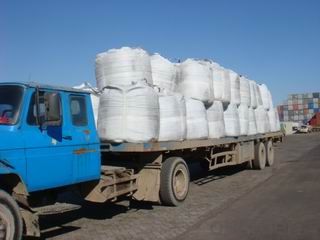
- Q: How is carbon used in the production of lubricants?
- Lubricants are produced using carbon in various ways. Base oil is one of the primary applications of carbon in lubricant production. Lubricants mainly consist of carbon-based molecules like mineral oils, synthetic oils, and vegetable oils. These oils are either obtained from crude oil or synthesized from other carbon-rich compounds. The base oil contains carbon atoms that form long chains or rings, offering exceptional lubricating properties. These carbon chains or rings possess high viscosity, reducing friction between moving parts. Consequently, this minimizes wear and tear, heat generation, and energy loss in different mechanical systems. Carbon is also utilized to create additives for lubricants. These additives are added to the base oil to improve its performance and provide additional advantages. For instance, graphite and molybdenum disulfide are carbon-based additives that deliver superior lubrication under extreme pressures and temperatures. They create a protective layer on the surface of moving parts, decreasing friction and preventing metal-to-metal contact. Moreover, carbon-based additives can enhance the oxidation resistance and anti-wear characteristics of lubricants. By introducing carbon molecules with specific functional groups, lubricants acquire the ability to form a protective film on metal surfaces. This film prevents corrosion and extends the lifespan of machinery. In conclusion, carbon plays a vital role in lubricant production. It acts as the base oil, providing viscosity and lubricating properties, and serves as an additive to optimize performance and safeguard machinery. Without carbon, the production of effective lubricants would be impossible.
- Q: What are the consequences of increased carbon emissions on forest ecosystems?
- Increased carbon emissions have a range of negative consequences on forest ecosystems. Firstly, higher levels of carbon dioxide in the atmosphere contribute to global warming, leading to higher temperatures and altered precipitation patterns, which can negatively impact the growth and health of forest plants. Additionally, increased carbon dioxide levels can stimulate the growth of invasive plant species, leading to competition and reduced biodiversity. Moreover, carbon emissions contribute to ocean acidification, which can harm marine ecosystems that are interconnected with forests. Lastly, increased carbon emissions can intensify the frequency and severity of wildfires, posing a significant threat to forest ecosystems and their ability to regenerate.
- Q: How does carbon impact the formation and intensity of hurricanes?
- Carbon, specifically in the form of carbon dioxide, plays a significant role in impacting the formation and intensity of hurricanes. The increase in carbon emissions due to human activities, such as burning fossil fuels, deforestation, and industrial processes, has led to a rise in atmospheric carbon dioxide levels. This, in turn, contributes to the phenomenon known as global warming. Global warming, caused by the greenhouse effect, leads to an increase in sea surface temperatures. Warmer ocean waters provide the necessary energy and moisture for hurricanes to form and intensify. As the atmosphere warms, it can hold more water vapor, which acts as fuel for hurricanes, increasing their potential for stronger and more intense storms. The warming of the atmosphere also alters the atmospheric conditions that influence hurricane formation. It changes the vertical wind shear, which is the difference in wind speed and direction at different altitudes. Low wind shear is favorable for hurricane development, as it allows the storm to organize and strengthen. However, global warming can disrupt this balance and create unfavorable wind shear patterns, inhibiting hurricane development. Furthermore, the increased carbon dioxide levels in the atmosphere contribute to ocean acidification. As carbon dioxide dissolves in seawater, it forms carbonic acid, which lowers the pH of the ocean. Acidic waters can have detrimental effects on marine life, including coral reefs, which act as natural barriers against storm surges during hurricanes. The degradation of these ecosystems weakens their ability to protect coastal communities from the destructive impacts of hurricanes. In summary, carbon emissions and the subsequent increase in carbon dioxide levels have a profound impact on the formation and intensity of hurricanes. The warming of the atmosphere and ocean, along with changes in wind shear patterns, create conditions that favor the development and intensification of hurricanes. Additionally, ocean acidification resulting from excessive carbon dioxide levels weakens natural defenses against storm surges. It is crucial to address the issue of carbon emissions and reduce our carbon footprint to mitigate the potential consequences of climate change and its impact on hurricanes.
- Q: How does carbon contribute to the flavor of food?
- There are multiple ways in which carbon, found in charcoal or charred substances, can enhance the flavor of food. Firstly, when food is cooked over charcoal, the carbon gives it a smoky taste and aroma, which enhances the overall flavor. This smokiness is particularly desirable in dishes such as barbecued meats, vegetables, and certain cheeses, as it adds a unique and enjoyable element to the taste. Additionally, carbon can serve as a natural filter, absorbing and eliminating impurities from food and drinks. This filtration process helps to get rid of unpleasant smells and flavors, resulting in a cleaner and more refined taste. For instance, activated carbon is often used in the production of alcoholic beverages like whiskey or vodka to remove impurities and create a smoother and more flavorful drink. Moreover, carbon can contribute to the development of desirable texture and color in certain foods. When sugar or other carbohydrates are heated, they undergo caramelization, a process in which the sugars react with heat to form a complex mixture of carbon compounds. This caramelization process creates rich, golden-brown hues and a unique depth of flavor, enhancing the overall taste experience. Lastly, carbon plays a crucial role in the fermentation process, which is essential in producing various types of food and drinks. During fermentation, microorganisms consume sugars and release carbon dioxide, which contributes to the texture, flavor, and carbonation of the final product. This is particularly evident in bread, beer, wine, and other fermented foods, where the presence of carbon dioxide adds lightness, complexity, and effervescence to the flavor. To summarize, carbon enhances the flavor of food through its ability to impart smokiness, act as a natural filter, facilitate caramelization, and participate in fermentation processes. Its presence in different forms enhances the taste, texture, and overall enjoyment of a wide range of food and drinks.
- Q: What are the different types of carbon-based food additives?
- There are several different types of carbon-based food additives that are commonly used in the food industry. These additives serve various purposes, including enhancing flavor, improving texture, and extending the shelf life of food products. Here are a few examples: 1. Activated Carbon: This type of carbon-based additive is commonly used as a food coloring agent. It is a porous form of carbon that is processed to have high adsorption properties. Activated carbon is often used to give black color to certain food and beverages, such as black food coloring or black lemonade. 2. Carbon Black: Also known as vegetable carbon or vegetable black, this additive is derived from charcoal and is commonly used as a natural food coloring agent. It is often used to give a dark black or grey color to foods like black licorice, ice cream, and bakery products. 3. Carbon Dioxide: While not directly added as an additive, carbon dioxide gas is used in food processing and packaging to extend the shelf life of certain products. It is commonly used in carbonated beverages to create the characteristic fizz and also in modified atmosphere packaging to preserve the freshness of certain foods. 4. Carbonated Water: This is carbon dioxide gas dissolved in water, creating carbonic acid. Carbonated water is often used as a base for soft drinks and beverages, providing effervescence and a refreshing taste. 5. Carbonates: Carbonates, such as calcium carbonate and sodium carbonate, are used as acidity regulators in food products. They help maintain the pH balance and control the acidity of certain foods, such as canned vegetables, fruit preserves, and pickles. 6. Carbon-based Preservatives: Some carbon-based additives, such as sorbic acid and propionic acid, are used as preservatives to inhibit the growth of molds, bacteria, and yeasts in food products. These additives help to extend the shelf life of products like bread, cheese, and processed meats. It is important to note that while carbon-based food additives are generally considered safe for consumption, it is always advisable to read food labels and consult with professionals, such as dietitians or healthcare providers, if you have any concerns or specific dietary restrictions.
- Q: How does carbon dioxide affect the formation of smog?
- Carbon dioxide (CO2) does not directly contribute to the formation of smog. Smog is primarily formed by the interaction of sunlight with other pollutants such as nitrogen oxides (NOx) and volatile organic compounds (VOCs). These pollutants are emitted from various sources including vehicles, industrial processes, and power plants. However, while carbon dioxide does not directly participate in smog formation, it does play a significant role in contributing to climate change. CO2 is a greenhouse gas, meaning it traps heat in the Earth's atmosphere and contributes to the warming of the planet. As the Earth warms, it can lead to changes in weather patterns, resulting in more stagnant air conditions that can exacerbate smog formation. Additionally, the burning of fossil fuels, which releases carbon dioxide, is a major source of air pollutants like NOx and VOCs. So while CO2 itself may not directly contribute to smog formation, the activities that release CO2 can indirectly contribute to smog by releasing other pollutants that are involved in its formation. Therefore, the impact of carbon dioxide on smog formation is indirect, primarily through its contribution to climate change and the release of other pollutants. Reducing carbon dioxide emissions and transitioning to cleaner energy sources can help mitigate climate change and indirectly reduce the factors that contribute to smog formation.
- Q: What is the melting point of carbon?
- The melting point of carbon is approximately 3550 degrees Celsius (6422 degrees Fahrenheit).
- Q: What is the basic principle of carbon fourteen detection?
- Carbon fourteenCarbon fourteen, a radioactive isotope of carbon, was first discovered in 1940. It is produced by hitting twelve carbon atoms in the air through cosmic rays. Its half-life is about 5730 years, the decay is beta decay, and the carbon 14 atoms are converted to nitrogen atoms. Since its half-life is 5730 years, and carbon is one of the elements of organic matter, we can infer its age by the 14 component of the residual carbon in the dying organism. When living in the biological, because need to breathe, the carbon content of 14 in its body is about the same, the organisms die will stop breathing, at this time the carbon 14 in the body began to decrease. Since the proportion of carbon isotopes in nature is always stable, one can estimate the approximate age of an object by measuring its carbon 14 content. This method is called carbon dating. Other commonly used methods include potassium argon measurements, potassium argon measurements, thermoluminescence measurements, and others;
- Q: How does carbon affect the color of gemstones?
- Carbon can have a significant impact on the color of gemstones. In fact, it is one of the main factors that contribute to the coloration of certain gemstones. One of the most well-known examples is diamonds. Diamonds are made up of carbon atoms arranged in a crystal lattice structure. The presence of impurities or defects within this crystal lattice can cause the diamond to exhibit various colors. When there is a high concentration of carbon impurities in a diamond, it can result in a yellow or brown tint. These are known as "fancy colored diamonds" and are graded on a scale that ranges from D (colorless) to Z (light yellow or brown). The more carbon impurities present, the more intense the color becomes. On the other hand, a diamond with a lower concentration of carbon impurities will appear more colorless. Carbon can also affect the color of other gemstones. For example, certain varieties of sapphires can contain traces of carbon that give them a grayish or blackish appearance. These are known as "black sapphires" or "star sapphires" and are highly sought after for their unique coloration. Similarly, carbon impurities in rubies can cause them to have a purplish hue. It is important to note that while carbon can impact the color of gemstones, it is not the only factor that determines their color. Other elements or impurities, as well as the crystal structure and light absorption properties of the gemstone, also play a significant role. Overall, the presence of carbon in gemstones can result in a wide range of colors, adding to their beauty and desirability in the world of gemology.
- Q: What about my world carbon board?
- First put the coal into the crusher and crush it into carbon powder (some versions are pulverized coal), so that they can be synthesizedCarbon powder, carbon fiberToner carbon powderCarbon fiber = carbon mesh (as if by name)Carbon fiber n.Put the carbon mesh into the compressor and compress the carbon plate
Send your message to us
FC93 Carbon Additive/CNBM Low Price Good Quality
- Loading Port:
- Tianjin
- Payment Terms:
- TT OR LC
- Min Order Qty:
- 0 m.t.
- Supply Capability:
- 100000 m.t./month
OKorder Service Pledge
OKorder Financial Service
Similar products
Hot products
Hot Searches
